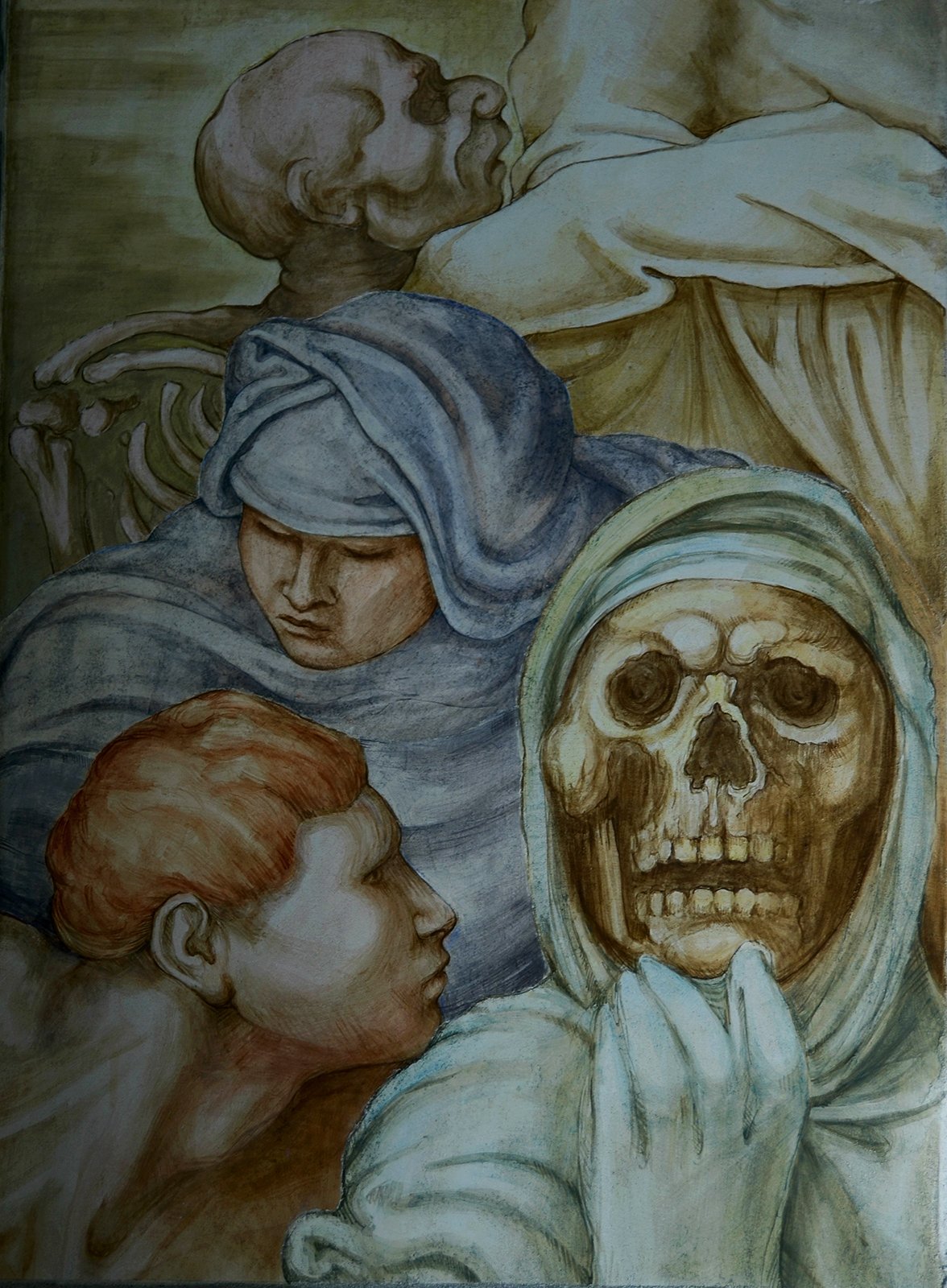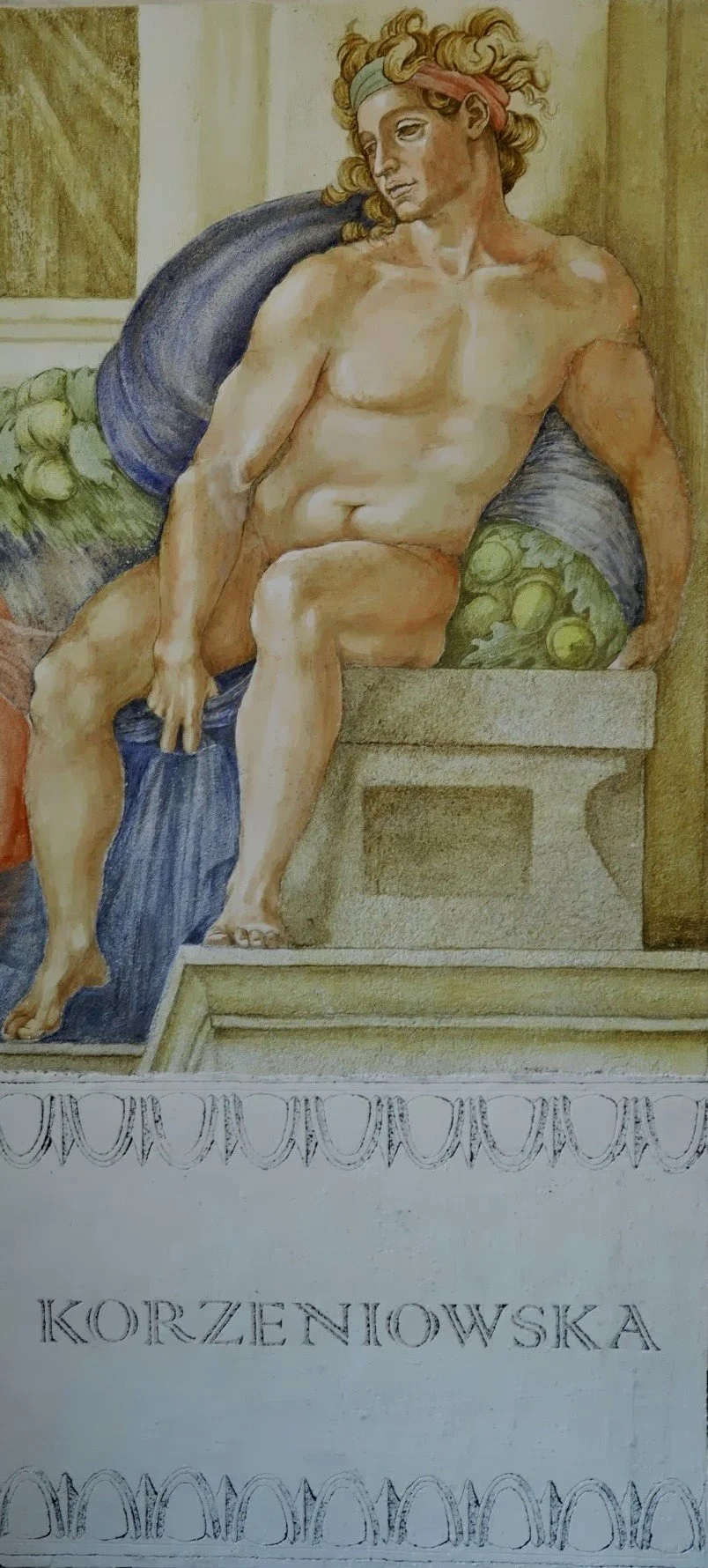
COPIES OF FRESCOES
Both of the frescoes I created were completed during my studies at the Academy of Fine Arts in Cracow. These works were produced as exercises to deepen my understanding of historic fresco techniques and materials. For references, I chose fragments of Michelangelo Buonarroti’s frescoes from the Sistine Chapel. In the fresco depicting a fragment of “The Last Judgment”, I made slight modifications to the original composition.
Both frescoes were executed using the buon fresco (wet fresco) technique on freshly applied plaster, following the giornata method—a technique meaning “day’s work”, in which only as much plaster is applied as can be painted in a single session.
The process began with a full-scale cartoon (preparatory drawing), which was then used to transfer the design onto the wall. I first applied coats of rough plaster mixed with sand, allowing them to dry. Next, I applied a thin, smooth layer called intonaco, covering only a section small enough to complete within one painting session. The contours were traced from the cartoon, and the fresco was painted using pigments mixed with water, which chemically bonded with the plaster as it dried.
The “Ignudi” fresco also incorporated elements of the fresco secco (dry fresco) technique. Unlike the wet frescomethod, fresco secco is painted onto an already dried wall, which is first moistened with limewater and painted while still damp. This technique does not allow the pigments to fully penetrate the plaster but instead creates a layer of paint on its surface.
Copy of one of the "The Ignudi" frescoes from Sistine Chapel by Michelangelo. Below sgraffito with my last name.
Copy of one of the fragment of "Last Judgement" fresco from Sistine Chapel by Michelangelo (altered).

